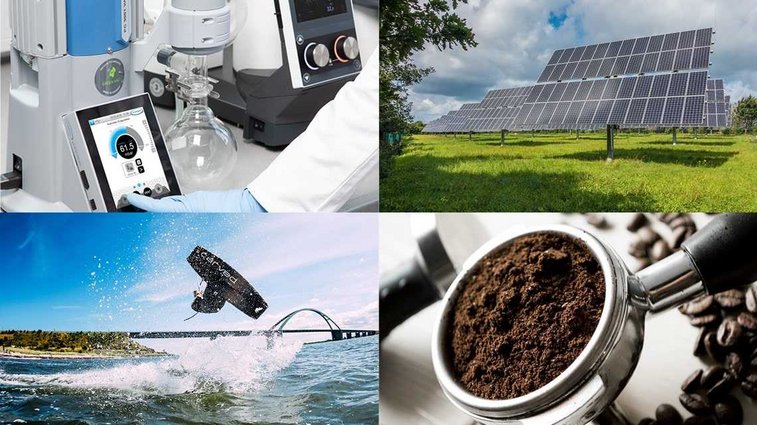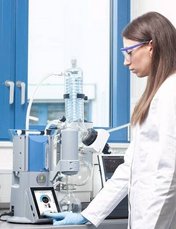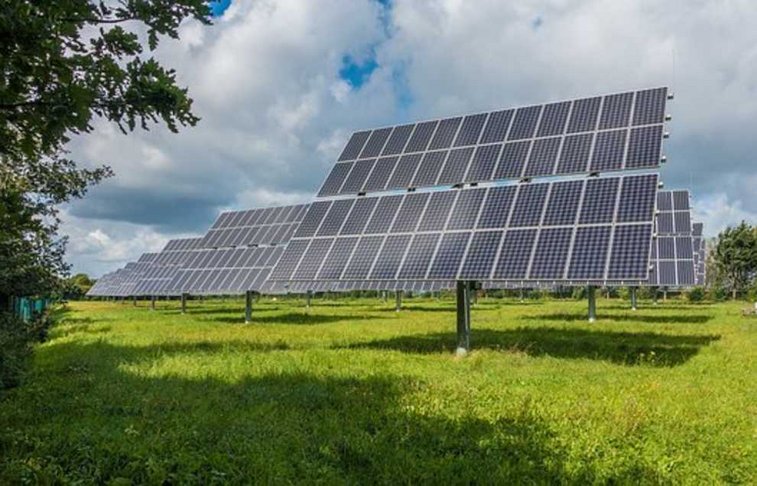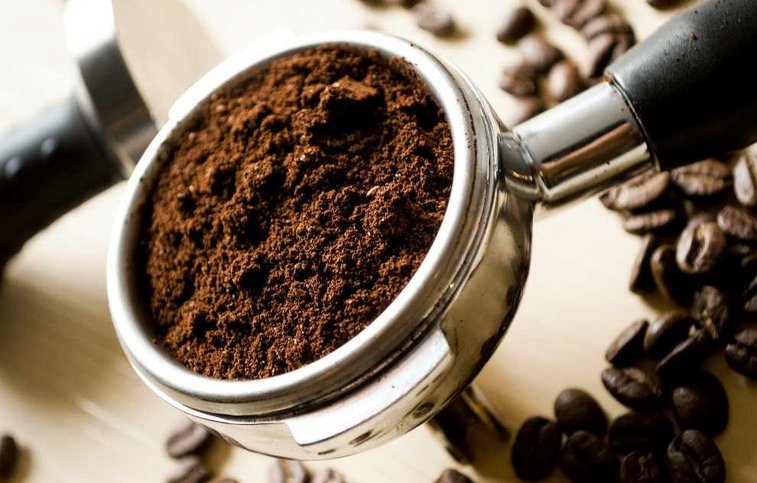
Vacuum pumps from VACUUBRAND are used in many industries.
Vacuum is present in many aspects of daily life. We are all familiar with thermal jugs or shrink-wrapped food, both of which rely on the physical principle of vacuum. It’s this “nothing” that insulates and protects food quality, but not only that – vacuum is a cross-sectional technology. This means that it supports wide ranging industries and their respective technologies. Did you know that VACUUBRAND vacuum technology is used in applications as diverse as the production of solar panels, kiteboards and instant coffee?

A vacuum pump in a classical lab scenario
Vacuum for research and analytics
Clearly one key market for vacuum pumps is lab use. Who benefits in this field? Universities, research institutes and companies doing important scientific work. Application fields include chemistry, pharmaceuticals, life sciences and physics. VACUUBRAND vacuum technology allows many processes such as filtering, evaporating or drying to be carried out in an efficient and controlled manner. What is more, our vacuum pumps can be used to support other pump types, for example as fore vacuum pumps for turbomolecular pumps in particle accelerators. In these scenarios, we are supporting investigations into new materials for semiconductor technology, or new methods in cancer therapy.
Sounds fascinating? Here’s something you probably didn’t know: Beyond lab applications, our vacuum technology can also be used directly in the manufacture of a variety of products. Here are just a few interesting examples.
Vacuum technology in the renewable energy sector

Vacuum pumps support photovoltaics
© Sebastian Ganso – Pixabay
Clean energy is increasingly becoming a key agenda in our society. Apart from hydroelectric power generation and wind power, photovoltaics plays a major role in renewable energy production. We all know what solar power stations on rooftops or in rural areas look like. Even private homeowners can generate their own electricity using solar panels. So how does vacuum technology support photovoltaics? Thin silicon slices, so-called wafers, are key components of solar cells. To produce a functional solar cell, the surface of the wafer has to be treated in a doping process to create the so-called emitter layer. This layer allows the solar radiation energy to be absorbed by the solar cell and converted to electric current. The doping process occurs in a low-pressure diffusion furnace under vacuum conditions. The advantages over alternative processes at atmospheric pressure are that processing under vacuum produces more highly uniform results, and therefore, more efficient conversion of solar energy, as well as higher wafer throughput, which translates to higher production output.
Vacuum technology in watersports

The kite surfing industry benefits from vacuum technology
© CORE Kiteboarding
Many of us enjoy sports in or above water. The sports industry keeps developing new kinds of activities that set new trends. One such innovation is kite surfing, a combination of a surfboard and a stunt kite. This sport has become so popular that it will be one of the sailing disciplines at the 2024 Olympic Games. On the island of Fehmarn in the Baltic Sea, one of the leading global manufacturers makes highly resilient “Carved Custom” boards which are designed to withstand high stresses. CORE Kiteboarding GmbH does this using a vacuum infusion process: A vacuum pump uniformly disperses the liquid resin mixture that surrounds the wooden core of the board. The subsequent curing of the resin, which takes several hours, likewise requires constant vacuum conditions. Our vacuum technology ensures that no air bubbles are created that could compromise the quality of the product. It also optimizes the bonding of the two composite materials, resin and fibers. The benefits clearly show on the water: lower weight and crisp performance for a more exciting experience.
Vacuum technology in food production

Instant coffee is gently preserved using vacuum technology.
© Elias Falla – Pixabay
From dried fruit to instant coffee, through to juice concentrate: as consumers we want our food and beverages to look, taste and appear like something that has been freshly prepared. To achieve this, manufacturers often use a freeze drying process, which preserves products carefully by drying them at low temperatures. A key step in this process is to deep-freeze the product first. This causes the contained unwanted liquid to solidify, for example, by turning water into ice. This is the point where the vacuum pump comes in: It evacuates the entire system, which allows the ice crystals in the product to sublimate at low temperatures. “Sublimate” means that the ice crystals directly change to vapor, bypassing the liquid phase, which would otherwise compromise product quality; for example by allowing aroma substances to escape. Freeze drying generally preserves important molecular structures and properties such as flavor, color and nutrients.
In which areas can we support you with our vacuum technology?
Try our Vacuum Pump Selection Guide
